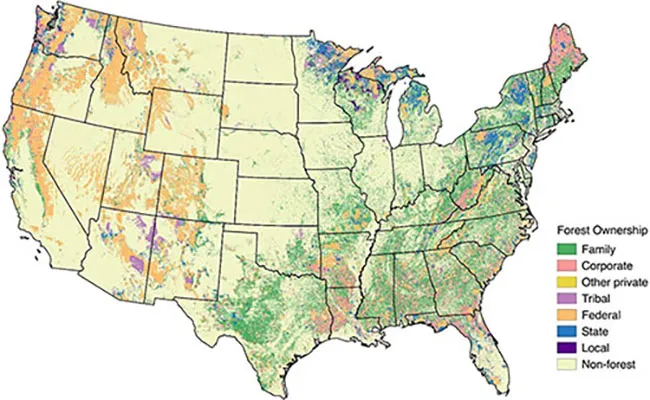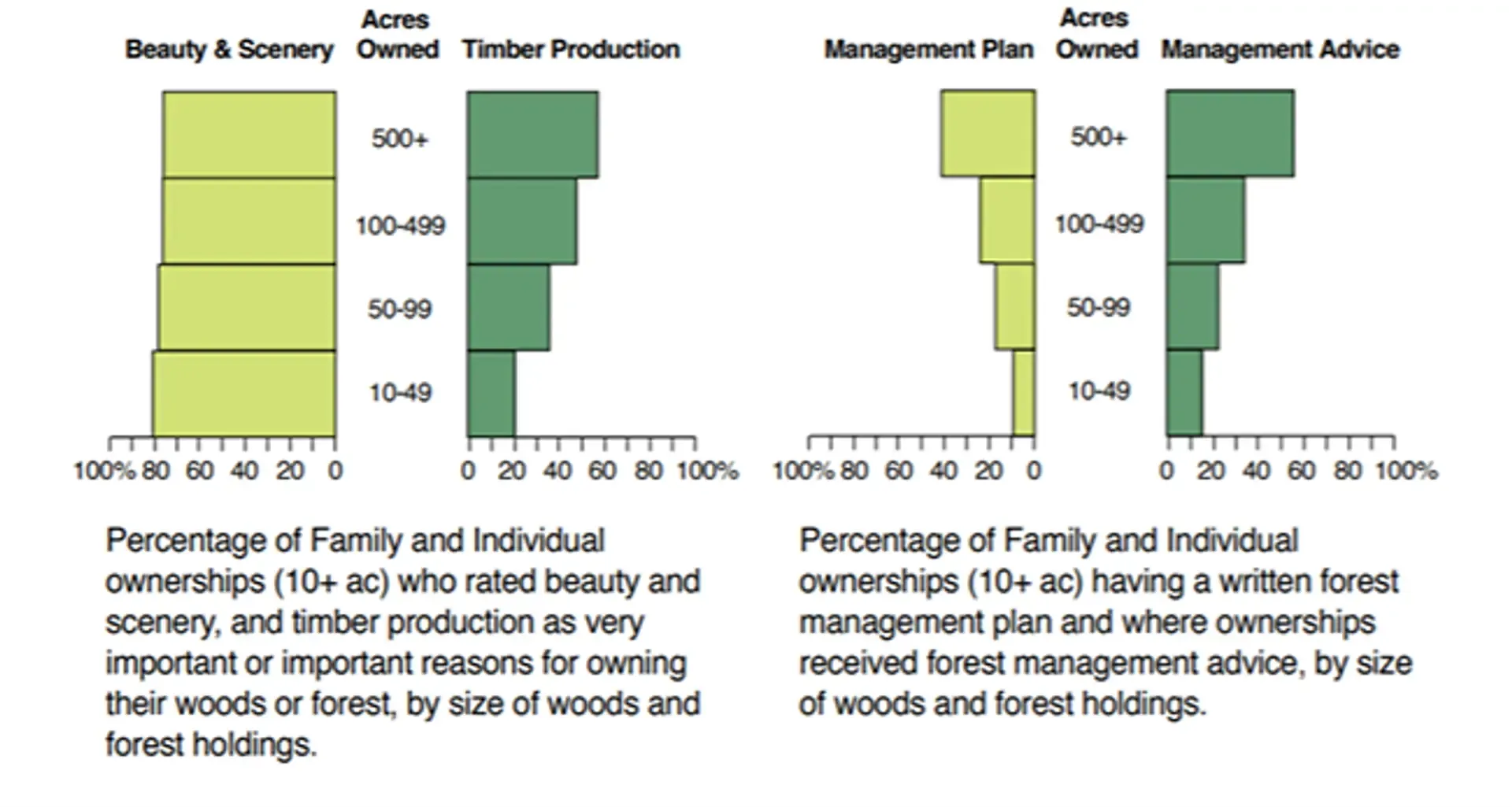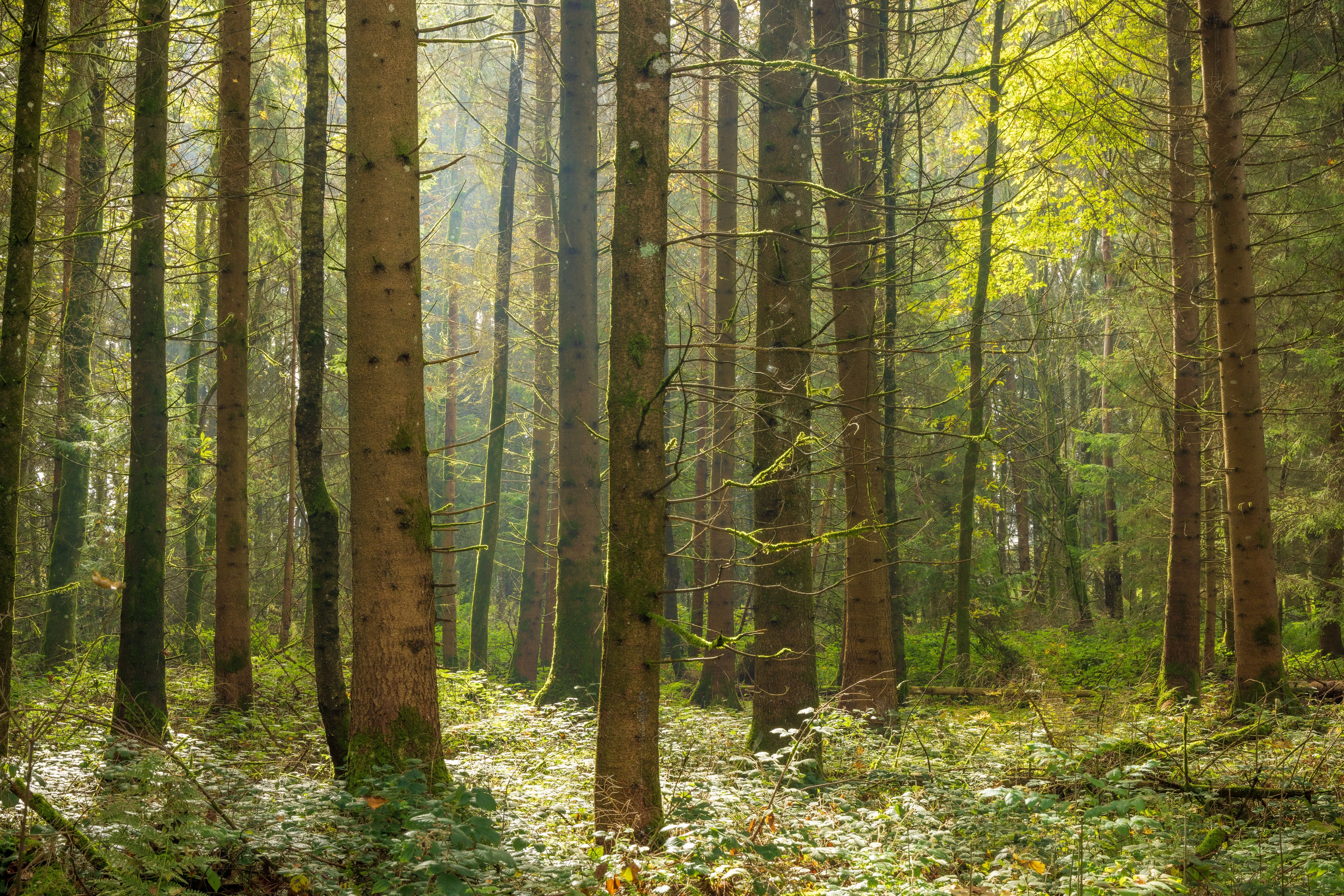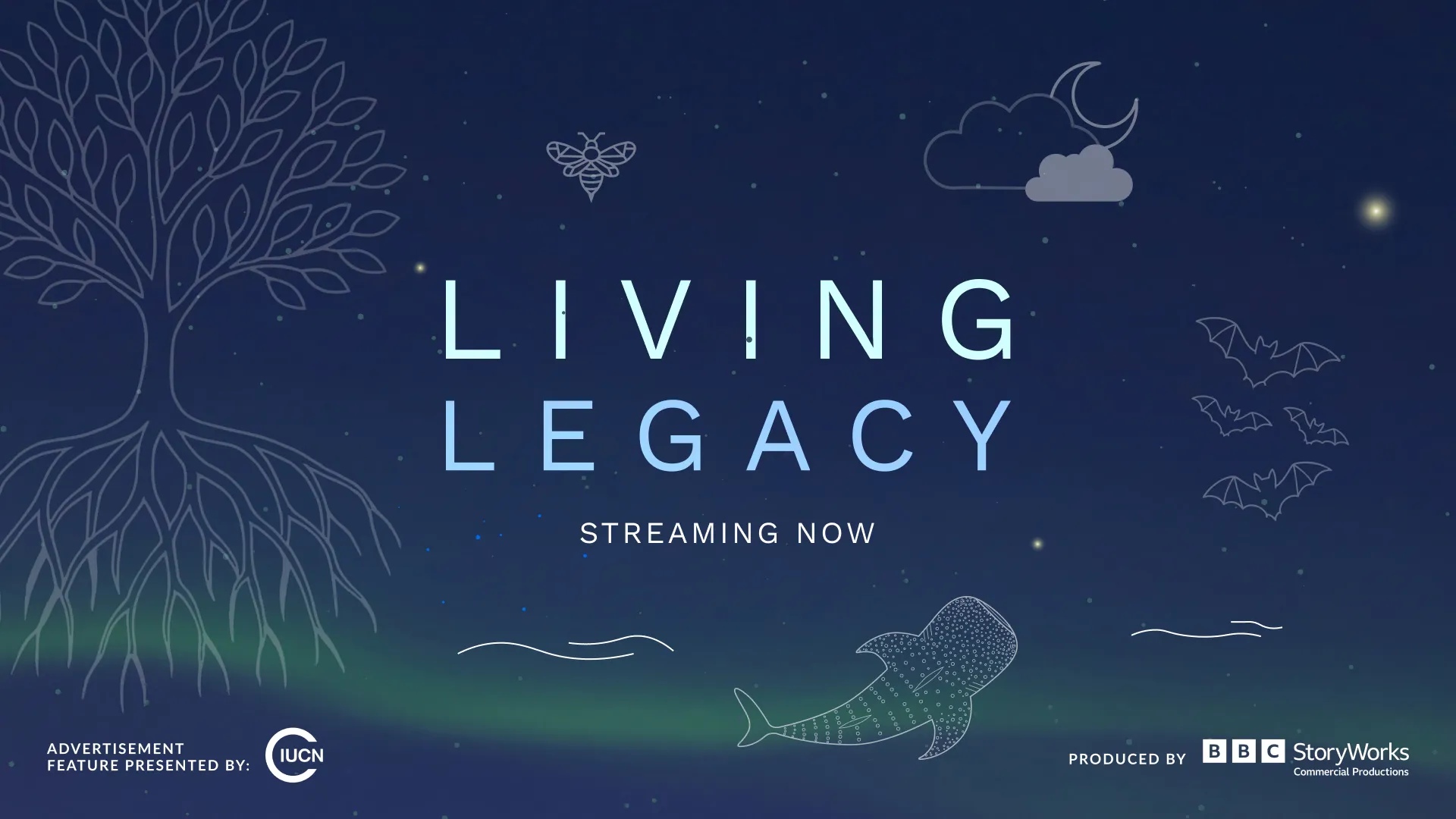Family Forest Owners Are Key to Conservation Impact
A migrating warbler doesn’t look at the property record when it stops off in your woods. So, to ensure its habitat—and that of many other species—is well managed, forests of all ownerships must be a part of conservation efforts.
While our forests can feel like one vast expanse, forest ownership in the U.S. is actually a patchwork of lands, with public and private lands of all types and sizes interlocking to create a forested landscape. Regardless of ownership boundaries, forests and the important resources they provide—clean water, clean air, wildlife habitat, and sustainable wood supplies—thrive as an entire ecosystem or landscape.
Forest challenges like wildfires, insects, and diseases do not stop at ownership boundaries either. This is why land managers and landowners of all types and sizes need the right programs and resources to get work done together, through public-private partnerships, and across diverse ownerships.

Family-owned forests are especially important because families and individuals collectively own more acres of woodlands across the U.S. than any other group, including the federal government and corporations.
To continue to get the resources we depend on and make meaningful gains on conservation priorities, family forests must be a priority. For example, nearly half of all the wood fiber that goes into supply chains comes from private lands. In the west, family forests help filter and clean the water that flows to the faucets of 22 million Americans. In the northeast and the south, private lands also make up critical wildlife habitat and migration corridors for thousands of threatened and endangered species, like songbirds, and keystone species such as the gopher tortoise. Family forest owners are a crucial link to protecting and improving these habitats, whether they own and care for the average private forest–around 70 acres–or hundreds of acres.

Our forested lands—large and small, public and private—are interconnected and interdependent. So, we need strategies to support all lands to achieve important conservation goals and protect the benefits all forests provide.
Family Forest Owners Have Shared Values, but Different Needs
While each landowner is unique, we know that family forest owners across the country have some things in common when it comes to their woodlands. First, we know that people are passionate about their land. At the American Forest Foundation, we see this in our everyday work with the 74,000 families and individuals across the country who are part of the American Tree Farm System, upholding high standards for forest stewardship and managing their land for wood, wildlife, water, and recreation.
Woodland owners also share some common values: most landowners, regardless of the number of acres they own, cite aspects such as scenic beauty, wildlife, and nature as highly important to them.

Source: National Woodland Owners Survey; Who Owns America’s Forests
While ownerships of all sizes share many important reasons for owning their forests, the rate at which landowners are adopting forest management plans or getting advice from a professional forester—two key resources that support family forest owners’ goals for their forests and create conservation outcomes—varies widely depending on the number of acres owned.
Growing Forest Conservation, Together
Creating a sustainable and significant impact on forest conservation will take an all hands, all lands approach. And since families and individuals are hold the largest portion of our country’s forests, but most aren’t tapping into professional advice or actively managing their lands, we need to ensure these landowners have access to the right resources that meet the size and scope of their stewardship needs. This includes forest management policies, funding, opportunities for technical assistance, and designing new solutions that remove barriers and get more landowners actively managing their land to ensure healthier, more resilient forests.
Whether the goal is reducing wildfire risk, improving wildlife habitat, providing more sustainable fiber, increasing carbon sequestration, or many other important outcomes, collaborating to implement strategies that work across landscape types for all sizes and ownerships, will drive innovation and large-scale impact. When we work to meet the unique needs of each type of landowner, addressing their economic, environmental, and social motivations and values, we can engage greater numbers of landowners, address issues at a landscape scale, and move the needle on big issues that have an impact on us all.
Related Articles

December 4, 2025
Forest Carbon Project Issued First Ever Credits
Conservation organizations the American Forest Foundation (AFF) and The Nature Conservancy (TNC) announced today the issuance of improved forest management (IFM) carbon credits to the Family Forest Carbon Program (FFCP) from standards setter Verra under its Verified Carbon Standard (VCS) Program. This marks the first issuance of credits produced using Verra’s VM0045 improved forest management (IFM) methodology, which was co-developed by Verra, AFF, TNC, and TerraCarbon.

December 1, 2025
Tackling Wildfire Through Partnership: AFF’s Stacked Benefits Model
A few miles outside Grass Valley, California, a narrow road winds past homes tucked into dense forest. From the ground, it is easy to forget that these trees are doing something extraordinary. They are standing between the community and the next wildfire.

November 20, 2025
New Film Showcases Carbon Project’s Impact on Family Landowners and Nature
The American Forest Foundation (AFF), a national organization committed to empowering family forest owners to create meaningful conservation impact, announced today the release of a new film that tells the story of the Family Forest Carbon Program (FFCP) and its impact on people and the planet.